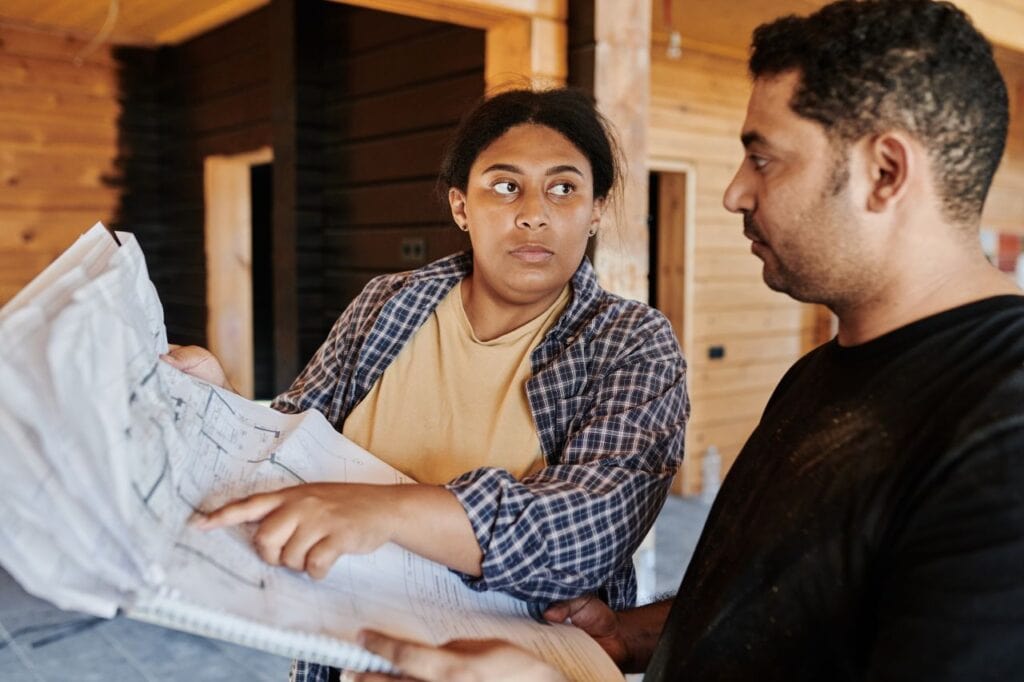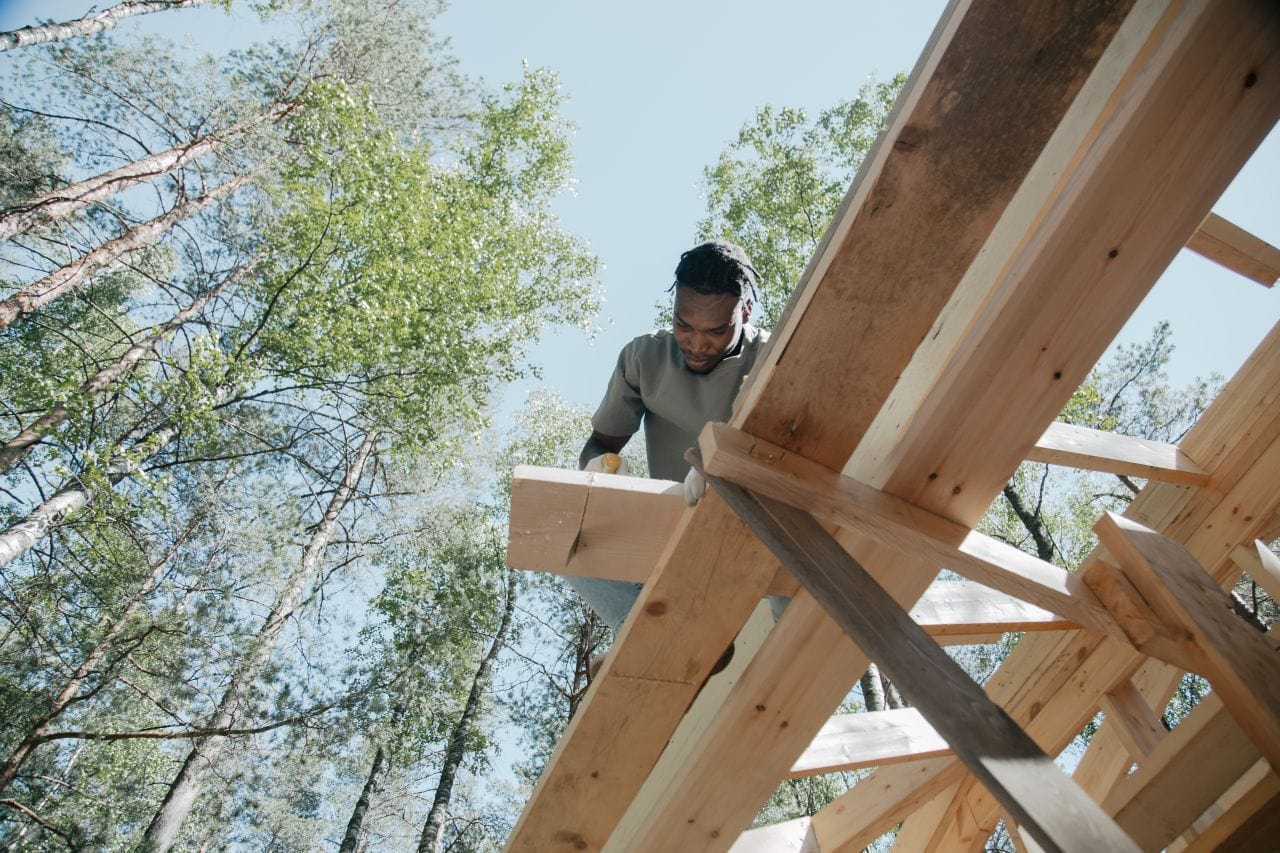A floor plan is a useful tool for conveying the layout of a building and highlighting the accessibility of various rooms and areas. There is no way to effectively advertise a home or build a house without first creating a floor plan. The first step in any kind of interior design job for your home should be making a floor plan.
A floor plan is a useful tool for illustrating concepts and discussing the advantages of a proposed design. If you want to get more realistic pricing from your home builder or contractor, drawing up a before and after floor plan is a great method to show them the full extent of the project. It is essential to have a floor plan when arranging furniture since you need to know what will fit and what won't. When relocating or setting up a new home or workplace, this will save you time and energy and help you avoid costly mistakes.
The most typical use for floor plans are:
- Selling a home.
- Creating real estate listings.
- Illustrating new-built homes.
- Planning home improvement and renovation projects.
What Is The Purpose Of A Floor Plan?
There are numerous benefits to creating floor layouts before breaking ground:
- They materialise ideas by giving them shape. A floor plan is a type of architectural design that shows the layout of a building from above, including all of the room sizes, distances, and placements of furniture and other fixtures. They act as the first blueprint for your design project and provide the builder or designer with something tangible to look at.
- They allow for more flexible preparation. You can get a better sense of what can be accomplished with the space you have by looking at floor plan drawings. If the layout of the master bedroom in your dream house isn't going to work, you may catch it in the planning stages with the help of a floor plan and make the required changes.
- They can spare material. The time and money you save on materials and labour can be put towards further development of your project when you have a detailed floor plan to refer to. The more information you provide in your blueprints, the quicker and easier construction will go.
- They are useful for setting the stage. A floor plan is useful for both real estate agents and homebuyers because it shows what the space currently looks like and what it could look like in the future.
What Should Be Included In Floor Plans?
Floor plans should incorporate more than simply the dimensions of a room when drawing up blueprints for a house or imagining the perfect office. Common elements seen in floor layouts are:
- Every single room in your house, as well as every single room in your office. Bedrooms, bathrooms, hallways, the kitchen, the garage, and the basement should all be clearly labelled and laid out on your house plans.
- A complete set of floor plans for each of your rooms. Each floor's arrangement, from the placement of the breakfast nook to the stairwells, should be clearly depicted on the floor plan. An understanding of the house's "flow" can be enhanced by paying attention to how the rooms are laid out.
- We have windows and doors. The placement of significant pieces of furniture like couches, the size and orientation of windows, the width and height of doors, and the length and width of doors when opened should all be included in your floor plan.
- Design elements of the room. A floor plan is useful for more than just visualising where each room will go; it can also be used to plan out where built-in appliances like stoves and refrigerators will go, as well as where the washing machine and dryer will be located. It is important to note on the floor plan any planned interior amenities, such as a fireplace or mudroom. Each room's intended use and associated furnishings should be shown on the floor plan.
4 Types Of Floor Plans
Depending on what kind of home you're building or renovating, you can choose from a few different sorts of house plans, such as:
- Ranch-style. The ranch floor plan is typically associated with single-story dwellings. Common areas like the kitchen, dining room, and living room are typically located on the other side of the house from the bedrooms.
- Cape cod. This layout is for houses with one and a half stories and is sometimes referred to as a farm ranch. The master bedroom is located on the first floor, setting this house plan apart from ranch-style homes. There is no true "second story" on a half-story because the walls are narrower and the floor area is smaller compared to a standard second storey.
- Two-story. In a typical two-story house, the second level is dedicated to the sleeping quarters, while the ground floor has the kitchen, dining area, living room, and any other communal spaces. Two-story layouts provide more architectural freedom, allowing for things like taller ceilings and more distinct living quarters for sleeping and socialising.
- Multi-level. A grand entrance or a completed basement are just two of the many architectural details that can be included into a home with a split-level or high-ranch floor plan. Some multi-level layouts make better use of available space by stacking floors rather than laying them out one on top of the other, and these designs typically include short stairways between each level.
5 Tips For Measuring Your Space
Precise measurements are the foundation of any reliable floor plan. How to properly gauge your dwelling is detailed below.
- It's best to get outside first. Take some outside wall measurements to get started. You should not include these dimensions on the floor plan itself, since doing so could lead to them being mistaken for the dimensions of the inside walls. After you've mapped out the area's confines, you may start exploring inside.
- Take dimensions of the inside walls. Construction plans, whether for a home or a business, cannot proceed without first determining the wall lengths. If taking precise measurements inside an existing room, do so by tracing a straight line down the baseboard from corner to corner. Wall height, from floor to ceiling, should also be measured. Multiply the length and width of a room to get an estimate of its square footage.
- Count the number of doorways. The dimensions of any entrances, such as a front or rear door, will be clearly marked on a detailed floor plan.
- Take a tape measure to the panes of glass. Get a measurement of the slit in the wall where the window will go. Determine how high the window will be set into the wall by taking measurements from the ceiling to the floor and then from both ends to the exterior of the window. Look at the orientation of the windows to ascertain how much natural light enters the space. Make careful to tally up the rough dimensions of any mouldings or trim you intend to install.
- Determine the door sizes. Indicate whether the door will swing in or out of the room, and give its dimensions. Get the dimensions of the doors' open archways and the distance between the wall ends and the doorframe.
5 Key Floor Plan Considerations
Professionals in the housing industry can't possibly recommend the optimal house layout without first gaining a comprehensive and deep understanding of the client's needs. It needs to have enough parking space, bedrooms, and bathrooms, as well as an orderly layout and a sense of architectural harmony to satisfy the bare minimum of requirements.
Layout
One client's ideal house design may be another's nightmare. To that end, it is important to take into account the customer's preferences as a starting point when designing a floor plan, and then make any necessary adjustments to make the space practical and comfortable for the client. Clients will be more inclined to hire you if you can design a floor plan that maximises usable space while eliminating empty corners.
Size
The number of individuals moving into the new home will determine the total number of bedrooms needed. As an added precaution, check that the room dimensions are adequate for daily use.
Lifestyle
You must learn about the homebuyers' way of life to ensure that the floor plan you provide is suitable for them. Customers who occasionally or regularly conduct business from home, for instance, may benefit from having a dedicated home office, while those who do so on a more infrequent basis may be content with setting off a portion of their bedroom or living room.
Expenses
The home's layout should reflect the way its inhabitants spend their time and money. Outstanding architectural ideas, such as lofty vaulted ceilings or big spiral staircases, might be more expensive to develop and demand substantial monthly spending afterwards.
Versatility
Make sure there is enough flexibility in the layout so that some rooms can serve several functions if necessary; for example, a guest room that can be easily transformed into a nursery, office, or gym. A home's layout should be planned with this in mind so that it can continue to provide for your clients' needs as their family grows.
8 Of The Best Interior Design Apps
Many tools that can help us create truly remarkable dwellings are being developed as technology advances. That is to say, a slew of excellent interior design apps for your mobile device, tablet, or computer, which will allow you to quickly and easily combine the latest in fashionable home furnishings.
Whether you're a professional, an amateur, or just looking to spruce up a single room for kicks, you'll find these apps to be indispensable.
RoomScan Pro
How long have you been trying to track down your home's initial blueprint? You're positive that you hid it away permanently. This straightforward programme scans your space and gives you the measurements and a 3D model, letting you visualise new furniture and design elements with ease.
You may either use the AR scanner or take measurements by touching your phone to the walls. It's useful not just for interior design, but also for landscaping and outdoor spaces.
Houzz
The popular home improvement website Houzz has an equally impressive companion app. You can find all you might possibly need to decorate your home, from design ideas and advice to a list of experts that can assist you out, all in one convenient location.
Heavenly
Havenly markets itself as an app that helps "actual people" with interior design. It has the added benefit of providing real-time discussions with expert interior designers, in addition to a curated selection of products and photo-based technology. If you ever find yourself at a loss or in need of instant solutions, this app is invaluable.
Photo Measures
Avoiding expensive blunders requires careful planning before making any purchases.
A fantastic tool for collecting and storing data in a number of dimensions. Keep track of everything you measure, including cabinetry, walls, and square footage. This is especially helpful when weighing the pros and cons of purchasing a small or large statement piece of art for your house.
Planner 5D
Planner 5D is a web-based application that can be used by anyone, regardless of experience or training, to make detailed floor plans for a house and cutting-edge interior designs.
This helpful tool will assist you in creating a mental image of your ideal living space. Then, you can construct a beautiful space in your home using their extensive database of pictures and plans. There are different challenges available, and the finished product can be shared on social media with friends and family.
Finishing touches using app-based interior design
Put some dramatic emphasis on an otherwise stark white room by using a melancholy monochrome print.
Live Home 3D
With Live Home 3D, every user may become a professional interior designer. As a result, you can visualise the end outcome without straining your imagination thanks to the inclusion of realistic floorplans and 3D projections.
If you have this app, you can "walk through the interior, apply materials, arrange furniture, and share the work across your devices." Furthermore, it features panorama photographs and viewing options, so you can make your room seem great no matter what its dimensions are. The app is compatible with desktop, laptop, and mobile devices.
SmartDraw
SmartDraw is an all-purpose programme that may be used for a variety of business-related tasks. They include a sketching and planning app tailored specifically to the interior design industry as part of the software package.
SmartDraw is an advanced interior design programme with hundreds of premade templates for the more seasoned or professional interior decorator. You can test it out at no cost to you.
The smartphone version of one of the most well-known glossy interior design publications in the world is now at your fingertips! Which means you can take mind-blowing ideas with you everywhere you go.
The magazine appearance may now be achieved in the comfort of one's own home or office, promising a wide range of cultural styles and trends as well as the various sources of inspiration from which they spring. Additionally, they provide a free trial period of 30 days.
FAQs About Floor Plan
The kinds of appliances, lights, and other features you incorporate in the floor design could be affected by the client's focus on environmental friendliness. It's possible to create 2D and 3D floor plans for houses and apartments of any shape or size to show potential buyers.
When you view a floor plan, the distances between walls can be displayed in either metric or imperial units, depending on your preferences. In addition, the layout, the summary table of the room, and overall design dimensions are updated as the area is calculated in real-time.
The walls tend to stand out the most when looking at a floor layout. Parallel lines stand for walls, which might be solid or filled with a design. Doors, windows, and wall openings are all represented by these voids in the wall.
Many prospective property owners prefer a privately designed home built instead of buying an existing one. Reasons for this vary, but mostly for the possible cost savings, be sure all your requirements are met, and perhaps most importantly: the creative challenge and sense of self-achievement in designing your house plan!
As is evident, floor plans are significant to the design and construction of any house. However, using specialised software, it takes an expert to create them, whether a simple architectural drawing or a more thorough rendering for small 3-bedroom house plans in 3D.



